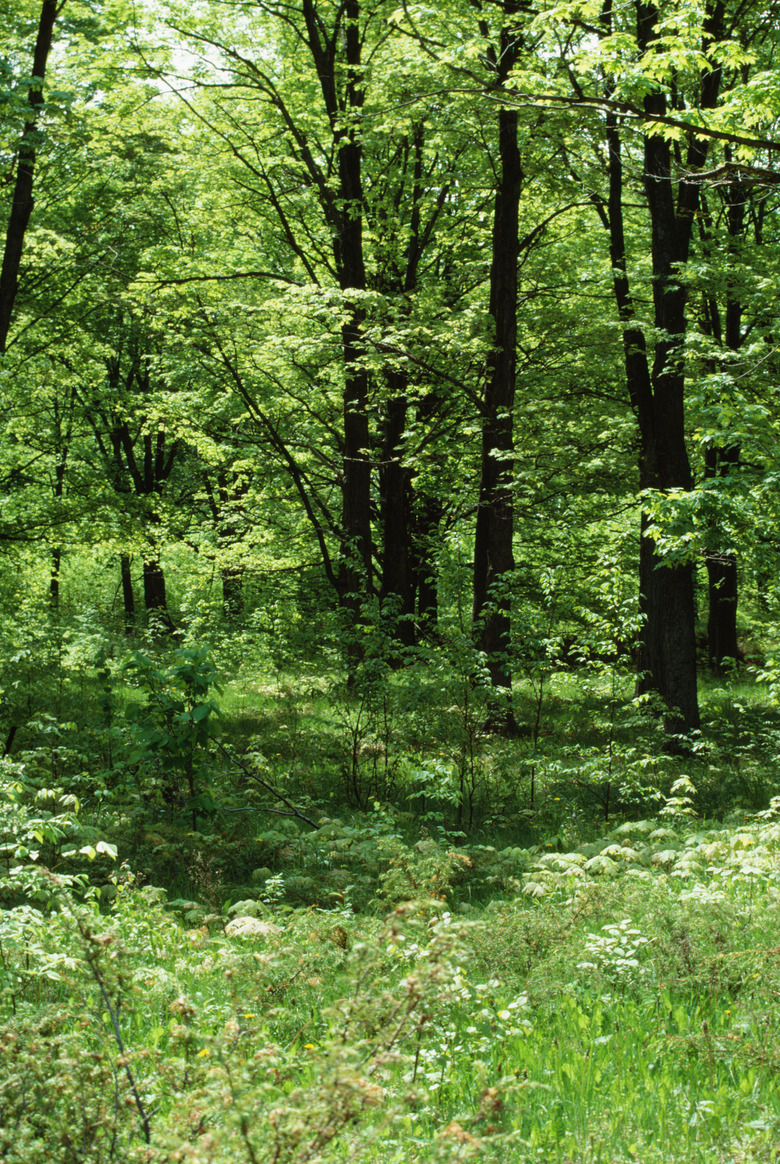How To Make Biomass Pyramids
A biomass pyramid is a diagram that shows the population at each level of a food chain. The bottom level of the pyramid shows the producers, the next level shows the primary consumers, the third level shows secondary consumers, and so on. In most ecosystems, there are more producers than primary consumers, more primary consumers than secondary consumers, and so on. An inverted biomass pyramid depicts an ecosystem that has more animals at the top of the food chain than food available for those animals to eat.
Biomass Pyramids
Step 1
Research the plants and animals that live in the ecosystem you will represent in the biomass pyramid.
Step 2
Draw the base of the pyramid. This level will represent the producers (plants) in the ecosystem.
Step 3
Draw the next level of the pyramid on top of the first. This level will represent the primary consumers (herbivores) in the ecosystem.
Step 4
Draw the third level of the pyramid. Make this level slightly smaller than the second level. The third level includes secondary consumers.
Step 5
Draw the final level of the biomass pyramid. This level should be the smallest level. It will show tertiary consumers (carnivores) that eat the animals on the level below.
Things Needed
- Pencils, pens or other drawing materials
- Paper
TL;DR (Too Long; Didn't Read)
You may wish to include data about the number of living things present in each level of the biomass pyramid.
Cite This Article
MLA
Roberts, Rebecca. "How To Make Biomass Pyramids" sciencing.com, https://www.sciencing.com/make-biomass-pyramids-10022143/. 24 April 2017.
APA
Roberts, Rebecca. (2017, April 24). How To Make Biomass Pyramids. sciencing.com. Retrieved from https://www.sciencing.com/make-biomass-pyramids-10022143/
Chicago
Roberts, Rebecca. How To Make Biomass Pyramids last modified March 24, 2022. https://www.sciencing.com/make-biomass-pyramids-10022143/
